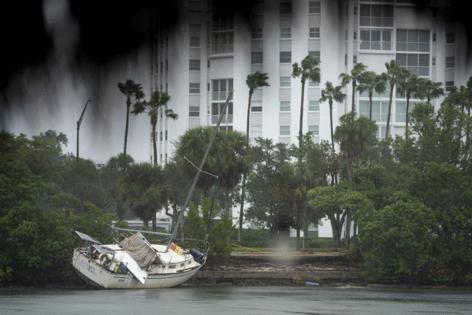Despite false claims, no technology exists to create massive hurricanes, experts say
Published in Weather News
You may have read the falsehoods spread on social media suggesting people, not nature, created Hurricane Helene.
Though people do have the means to encourage rainfall on a small scale, no technology exists that would allow anyone to create a hurricane, experts say.
That’s because hurricanes require massive amounts of energy to form, explained Chip Konrad, a University of North Carolina professor whose research focuses on the science of extreme weather.
“They’re very strong, and they occur over a very broad area, and there’s just a tremendous amount of energy that’s required to create them and also to maintain them,” Konrad said.
Helene originated from a thunderstorm in the western Caribbean first observed on Sept. 23, according to NASA. Its first recorded coordinates are around 1,500 miles from North Carolina, and the National Hurricane Center tracked the storm continuously.
When Helene made landfall Sept. 26, tropical storm-force winds extended more than 300 miles from its center. That’s approximately the distance from Raleigh to Cherokee.
The National Oceanic and Atmospheric Administration’s research division says no weather modification technology could produce or steer such a storm.
“Hurricanes Helene and Milton, like all hurricanes, formed on their own due to the right conditions of sea surface temperature and upper atmospheric winds,” NOAA spokesperson Monica Allen said in an email.
It takes months of heat over spring and summer to warm the Atlantic Ocean and Gulf of Mexico enough to create powerful hurricanes, said Konrad, who also directs NOAA’s Southeast Regional Climate Center.
“That energy gradually builds up, and that’s what it requires to get a hurricane,” he said. “Think about how big the oceans are. And it takes a long time in the natural world.”
Conspiracy theories spread after Hurricane Helene
U.S. Rep. Marjorie Taylor Greene, a Republican from Georgia, has amplified conspiracy theories on social media that suggest the hurricanes that have hit the Southeast this year are tools of voter suppression ahead of the 2024 election.
“Yes they can control the weather. It’s ridiculous for anyone to lie and say it can’t be done,” Greene wrote Oct. 3.
Democratic President Joe Biden dismissed the idea Oct. 9 as “beyond ridiculous.”
Greene followed up Oct. 8 with a link to NOAA’s records of attempts at weather modification. The agency has tracked 1,026 such attempts since 1972.
The most common reasons listed on the site are increasing rain and snowfall by cloud seeding, “usually for the purpose of increasing the local water supply,” according to NOAA.
That’s typically done out west, not in the less drought-prone Southeast, Konrad said, and could never produce rainfall on the scale brought by Helene.
“The thing about cloud seeding is it can only be effective at a local scale. So, you could make it rain, maybe, a little bit more in one place, but you can’t make it rain over a broad area,” Konrad said.
Helene brought more than 10 inches of rain to much of Western North Carolina, but large areas saw 18 inches from the tropical storm and the rain that fell the two days before. The N.C. State Climate Office’s highest measurement for Sept. 25 to Sept. 27 was more than 31 inches at Busick, in Yancey County.
The U.S. government did experiments decades ago that aimed to weaken hurricanes, not strengthen or create them, according to NOAA records.
In 1947, military scientists working with General Electric on Project Cirrus dumped crushed dry ice into a hurricane after it had passed over Florida into the Atlantic, according to NOAA. Instead of weakening, the storm strengthened and veered into southern Georgia. Experts were unsure if the swerve was caused by the scientists, but the public was outraged and the efforts were abandoned.
From 1962 to 1983, the government used silver iodide to weaken storms further from land under Project Stormfury. The results were inconclusive, according to an account published in the American Meteorological Society in 1985.
“Since then NOAA has done no weather modification,” Allen said. ”The primary concern about altering weather is that you could make things worse, such as the case of using nuclear bombs on hurricanes — a common recommendation NOAA receives from the public.”
_____
©2024 The Charlotte Observer. Visit charlotteobserver.com. Distributed by Tribune Content Agency, LLC.







Comments